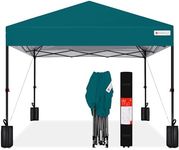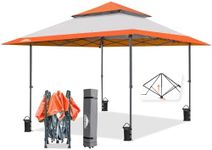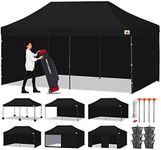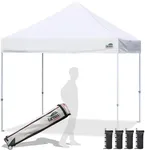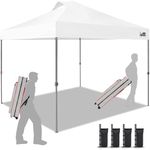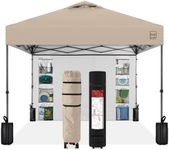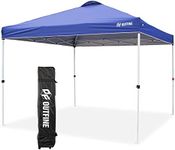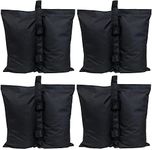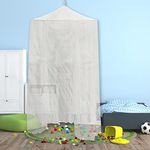Buying Guide for the Best Portable Pop Up Canopies
Choosing the right portable pop-up canopy can make a significant difference in your outdoor experience, whether you're planning a picnic, a market stall, or a camping trip. The key is to understand your specific needs and how different features of the canopy can meet those needs. Here are some important specifications to consider when selecting a portable pop-up canopy.SizeThe size of the canopy is crucial because it determines how much space you will have underneath. Canopies come in various sizes, typically ranging from 5x5 feet to 12x12 feet or larger. If you need a canopy for a small gathering or personal use, a smaller size might be sufficient. For larger events or more extensive coverage, opt for a bigger size. Consider the number of people and the amount of equipment or furniture you need to cover when choosing the size.
MaterialThe material of the canopy affects its durability, weather resistance, and weight. Common materials include polyester, polyethylene, and canvas. Polyester is lightweight and water-resistant, making it suitable for general use. Polyethylene is more durable and offers better UV protection, ideal for prolonged outdoor exposure. Canvas is heavy-duty and highly durable but can be heavier and more expensive. Choose the material based on the typical weather conditions you expect and how often you plan to use the canopy.
FrameThe frame of the canopy provides the structure and stability. Frames are usually made from steel or aluminum. Steel frames are strong and durable but can be heavier and prone to rust if not properly treated. Aluminum frames are lightweight, rust-resistant, and easier to transport, but they may not be as sturdy in strong winds. Consider how often you will be setting up and taking down the canopy, as well as the typical weather conditions, to decide which frame material is best for you.
Ease of SetupOne of the main advantages of a pop-up canopy is its ease of setup. Look for canopies that are designed to be set up quickly and with minimal effort. Features like push-button sliders, telescoping legs, and pre-attached frames can make the setup process smoother. If you plan to set up the canopy frequently or by yourself, prioritize models that emphasize ease of setup.
PortabilityPortability is essential if you need to transport the canopy to different locations. Consider the weight of the canopy and whether it comes with a carrying case or bag. Wheels on the carrying case can also make transportation easier. If you need to move the canopy frequently, look for lightweight models with convenient carrying options.
Weather ResistanceWeather resistance is important to ensure that the canopy can withstand various outdoor conditions. Look for features like UV protection, water resistance, and wind resistance. Canopies with reinforced corners, sturdy frames, and high-quality materials will offer better protection against the elements. Consider the typical weather conditions in your area and choose a canopy that can handle those conditions.
Additional FeaturesAdditional features can enhance the functionality and comfort of your canopy. These may include sidewalls for extra protection, vents for better airflow, and adjustable height settings. Think about how you plan to use the canopy and what extra features might be beneficial. For example, sidewalls can provide privacy and protection from wind, while vents can help keep the interior cool on hot days.
